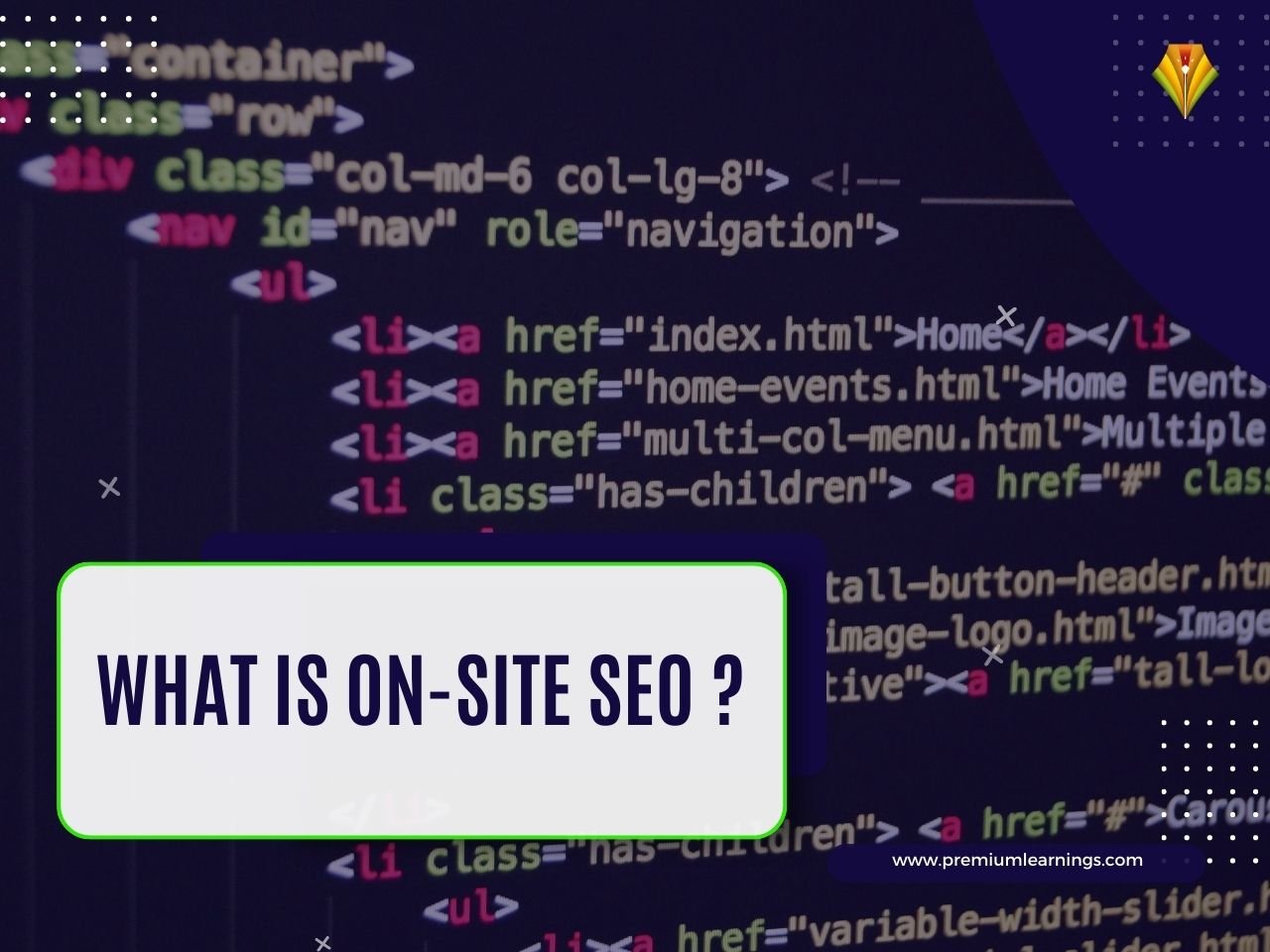What is on-site SEO?
On-site SEO (Search Engine Optimization), items of a website are optimised to increase their exposure and position in search engine results pages (SERPs). This include improving the website’s content, architecture, and HTML source code to make it simpler for crawlers, interpreters, and indexers.
Two of the basics of Search Engine Optimization while attempting to rank your website are on-site and off-site SEO.
In addition to assisting search engines in understanding page content, effective on-site SEO also aids people in quickly and clearly determining a page’s subject matter and whether it responds to their search query. To put it simply, effective on-site SEO aids search engines in comprehending what a human visitor would see (and what value they would receive) if they visited a page, enabling them to consistently serve up what human visitors would consider high-quality information about a given search query (keyword).
The ultimate objective of on-site SEO can be conceptualised as making it as simple as possible for users and search engines to:
- understanding the purpose of a website;
- Determine whether or not that page is pertinent to one or more search terms (i.e., a specific keyword or group of keywords);
- Identify the page as valuable and deserving of a high placement on a search engine results page (SERP).
Keywords, content, and on-site SEO
On-site SEO has traditionally been associated with the usage of keywords, and more specifically, with placing a high-value term in a number of strategic spots on a website.
It’s important to keep in mind what those phrases are actually: content themes, in order to comprehend why keywords are no longer at the core of on-site SEO. Historically, a webpage’s ability to rank for a particular term depended on its ability to be found by search engines by employing the proper keywords in the correct contexts throughout the website. The primary goal of on-site SEO strategies was to ensure that search engines detected keywords and ranked a site as relevant for those terms; user experience was secondary.
But search engines have become incredibly smart in recent years. They can determine the meaning of a page by looking at the synonyms used, the context in which the content appears, or even just by focusing on how often particular word combinations are used. Although using keywords is still important, on-page SEO no longer relies on prescriptive techniques like using an exact-match keyword a predetermined number of times in a given position. The crucial factor is relevance. Consider how relevant the content is to the user intent underlying the search queries for each of your pages (based on your keyword usage both on the page and in its HTML).
In this sense, on-site SEO is less about repetition or placement of keywords and more about knowing your visitors, what they’re searching for, and what themes (keywords) you can utilise to generate content that best meets their needs. Pages that meet these requirements have material that:
- In-depth. One of Google Panda’s main goals was “thin” material; today, it is generally accepted that in order to rank well, content must be adequately detailed.
- User-friendly. Is the writing legible? Is your website set up in a way that makes it simple to navigate? Is it normally free of adverts and affiliate links, or is it cluttered?
- Unique. The ability of a site to rank on SERPs may be impacted if duplicate material from other places on your site (or the Internet) is not correctly managed.
- trustworthy and authoritative. Does your information on a given topic stand on its own as a trustworthy source?
- suited to the search goals of the user. Meeting searcher expectations is a crucial component in producing and optimising for quality content. The themes of the content should correspond to the search terms for which they rank.
Non-keyword-related on-site SEO
Numerous “keyphrase” factors can affect a page’s on-site optimization in addition to the keywords (themes) utilised in content and how they are discussed.
These consist of items like:
Use of links on a page: What number of links are there? Do they come from within or without? What are they pointing at?
- Page load speed
- Use of Schema.org structured data or other markup
- Page URL structure
- Mobile friendliness
- Page metadata
The common denominator among all of these components is the creation of a positive user experience. The on-site optimization of a page improves with how useable it is, both technically and non-technically.
How do you optimize a page?
A webpage on your website needs both text-based updates and HTML-based changes to be fully optimised. If you’re interested in learning more about the on-site elements that affect ranking and how to enhance your own website pages, check out this Blog .
To enhance your knowledge on On-Site SEO, consider attending our Digital Marketing and Growth Hacking session. Register for the webinar now by clicking on the link below.
https://premiumlearnings.com/contact/
You can also download premium learning’s app from the link below
https://play.google.com/store/apps/details?id=com.premiumlearnings.learn&hl=en
Keep Learning :-


